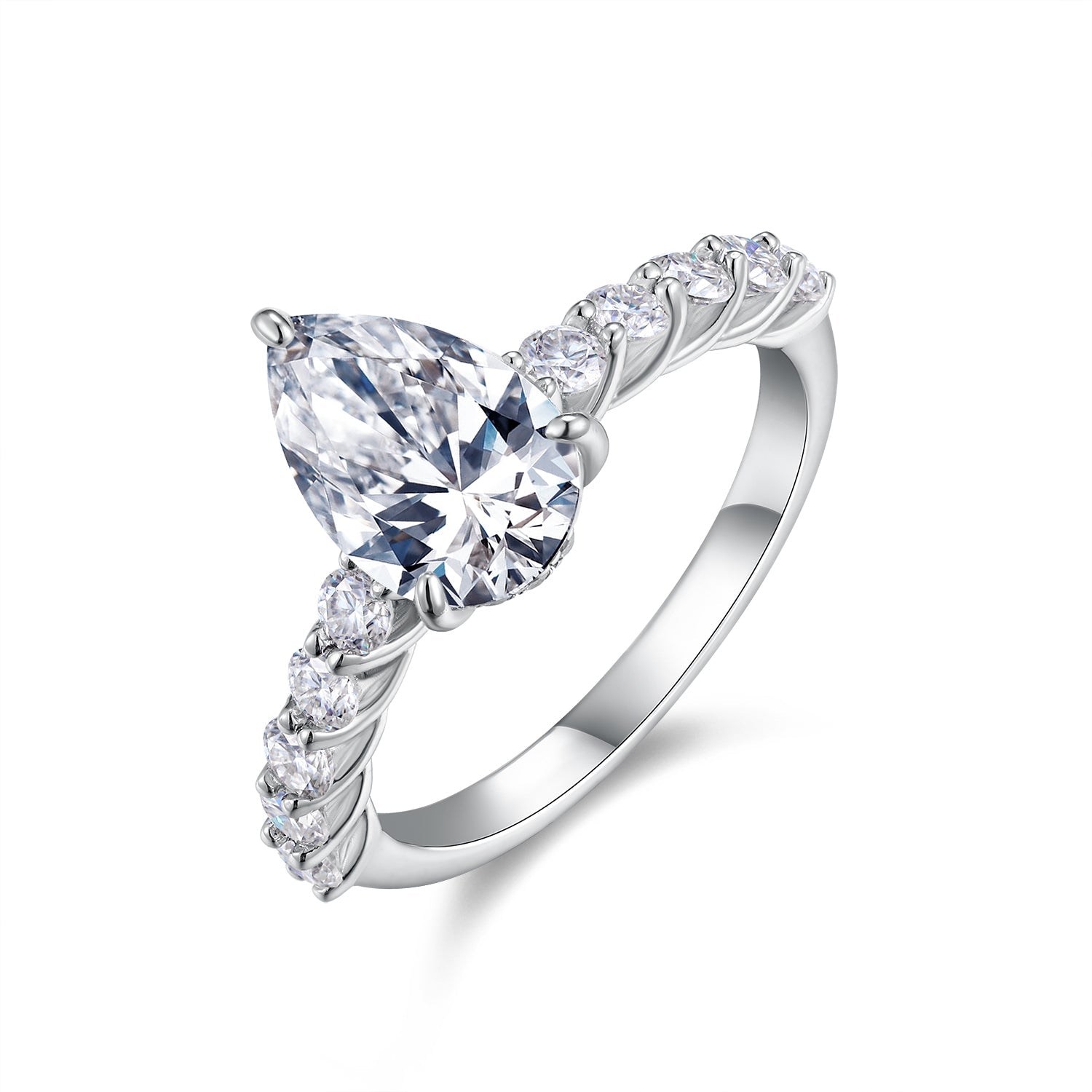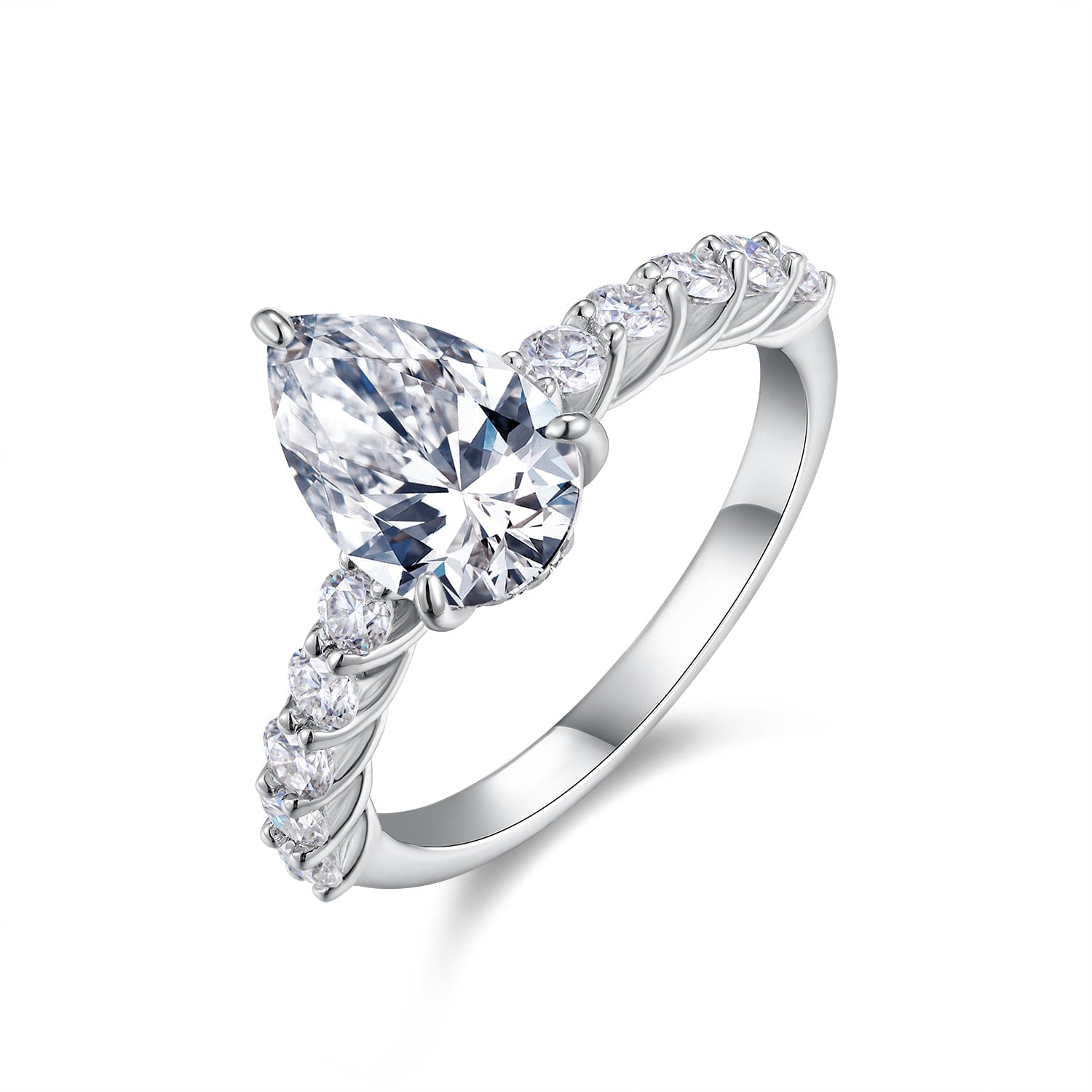Understanding the Water Resistance of Moissanite Rings During Swimming: Key Factors to Consider
Swimming, whether in pools, oceans, or freshwater lakes, exposes jewelry to water, chemicals, and physical stress, which can impact the durability and appearance of a moissanite ring. While moissanite itself is highly resistant to water and chemicals, the metal band and setting require careful attention to ensure long-term protection.
Assessing the Impact of Chlorine and Saltwater on Metal Bands
Chlorine, commonly found in swimming pools, is a harsh chemical that can corrode or tarnish metal bands over time. Even stainless steel or platinum, known for their durability, may develop surface discoloration or pitting if exposed to chlorine frequently. Saltwater, on the other hand, contains corrosive salts that can accelerate metal degradation, especially in softer metals like gold or silver. To protect your ring, avoid wearing it during prolonged swimming sessions in chlorinated pools or the ocean. If you choose to keep it on, rinse the ring thoroughly with fresh water immediately after swimming to remove chlorine or salt residue.
The setting style also plays a role in water resistance. Prong settings, where the stone is held by small metal claws, are more vulnerable to loosening in water due to the constant movement and pressure. Bezel or flush settings, which surround the stone with metal, offer better protection against water infiltration and physical damage. Regularly inspect the setting for signs of wear, such as loose prongs or gaps between the metal and the stone, and address any issues promptly to prevent loss or damage.
Preventing Loss or Damage During Active Swimming Movements
Swimming involves repetitive motions like stroking, kicking, and diving, which can increase the risk of the ring slipping off or catching on objects. A loose-fitting ring is particularly susceptible to loss in water, as the skin may shrink slightly due to cold temperatures or prolonged immersion. To ensure a secure fit, have your ring professionally sized to your finger, accounting for any fluctuations in size due to temperature or activity level. During swimming, avoid adjusting the ring or touching it unnecessarily, as this can loosen the setting or create opportunities for it to fall off.
If you participate in water sports like surfing or diving, where the ring is more likely to experience impact or abrasion, consider removing it altogether. Store it in a waterproof container or a secure pocket to prevent loss or damage. For casual swimming, wear the ring on a finger that is less active during strokes, such as the ring finger of your non-dominant hand, to minimize movement and friction.
Maintaining the Ring’s Sparkle After Exposure to Water
Even with proper precautions, water exposure can leave residue on the ring, dulling its shine over time. Chlorine, salt, and minerals in pool or ocean water can build up on the metal and stone, creating a cloudy film that reduces brilliance. To restore the ring’s luster, clean it regularly using a soft-bristled brush and mild dish soap diluted in water. Gently scrub the band and setting, paying close attention to the underside of the stone and any crevices where residue may accumulate. Rinse the ring thoroughly under running water and dry it with a lint-free cloth to prevent water spots.
For deeper cleaning, soak the ring in a solution of warm water and a few drops of ammonia-free jewelry cleaner for 10-15 minutes, then brush and rinse as usual. Avoid using ultrasonic cleaners or harsh chemicals, as these can damage the metal or loosen the setting. Store the ring in a dry, cool place away from direct sunlight to prevent tarnishing or discoloration between cleanings.
By assessing the impact of chlorine and saltwater, preventing loss during active movements, and maintaining the ring’s sparkle after exposure, you can enjoy wearing your moissanite ring during swimming without compromising its beauty or durability. These practices ensure that your ring remains a stunning accessory, whether you’re lounging by the pool or diving into the ocean.



Leave a comment
This site is protected by hCaptcha and the hCaptcha Privacy Policy and Terms of Service apply.